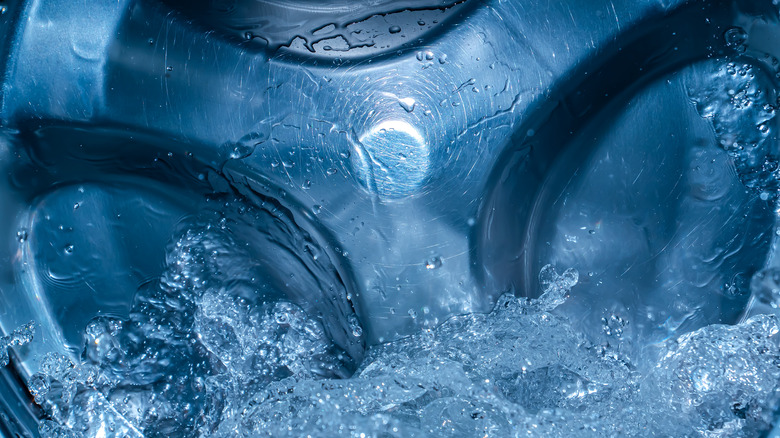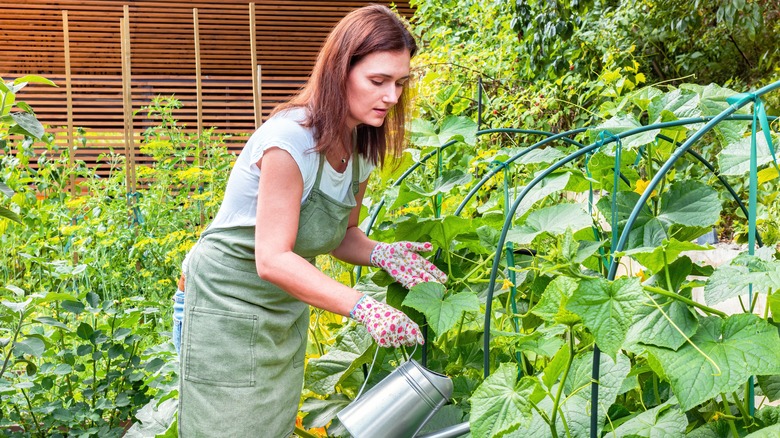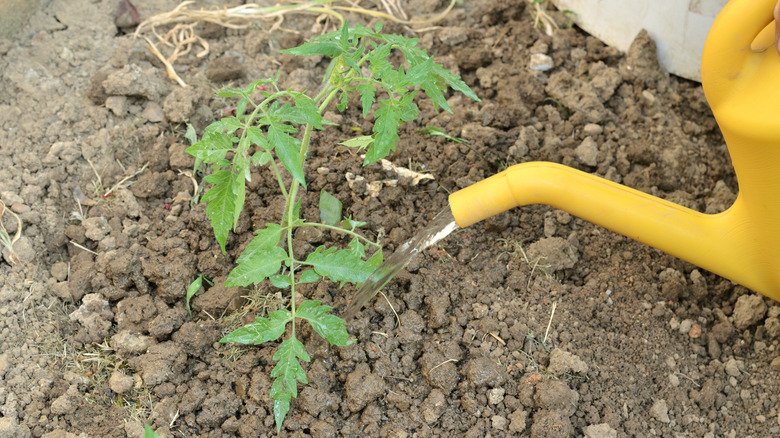When Is It Safe To Reuse Household Graywater On Plants?
Watching all that water go down the drain after a load of laundry can be frustrating, especially knowing your plants could use it during a too-dry spring and summer. Graywater refers to any type of water that's already been used in some way, such as water coming out of the washing machine, bathroom sinks, or tub after the kids' bath. It's important to note this water isn't safe for drinking, cooking, or washing your hands, as it can contain bacteria, other germs, and chemicals from soaps and debris.
Some washing machines can produce 15 to 40 gallons of graywater from just one load of laundry, depending on the system. Considering that, you may want to find a way to put that water to better use. An easy way to do so is to use it to flush toilets, but what about using it for watering your plants? Is it safe to use this water on your fruit trees, vegetable garden, or other outdoor plants? Before you decide to use household graywater on plants, there are a few key things to know.
In drought conditions, use it outdoors
You can reuse household graywater on plants, especially in drought conditions. Some homes have graywater systems to gather water from acceptable sources and pipe it outside to be used for various tasks. These can be beneficial in regions where there are constant water shortages. In areas like California where water is often scarce, use graywater for home irrigation but only as a last resort when it's not possible to use other water to keep your plants hydrated.
There are risks to using it, even with plants. For example, graywater can contain organic matter and residues, which can encourage pest infestations around the areas you're using it. This is problematic when growing fruits and veggies. It can also have some viruses and bacteria in it. When these infiltrate the plants or get on fruits and vegetables, you could ingest it and become sick. Experiments performed by the Royal Horticultural Society found that using graywater on some plants for longer than six weeks can lead to salt stress. Dishwasher water and tap water that's gone through a softener were shown to be more stress-inducing. The salt can alter the soil structure, which impacts the way plants and other microorganisms grow. Rinsing them with clean tap water may help.
How to use household graywater on plants safely
In situations where water limitations are keeping you from growing a garden or keeping your beautiful plants happy, you may want to use graywater at least partially. If you do so, there are a few simple steps to help minimize risk. First, avoid allowing the graywater to touch the edible parts of the plants, such as the fruit or vegetable and the sprouts. Next, don't use water that contains chlorine in it, such as from bleach, as that can damage the foliage of the plant. Avoid any use of graywater that contains boron, a cleaning agent found in some laundry soaps, as it's toxic to plants at high levels.
To reduce the amount of bacteria present in graywater, use it as soon as possible and within 24 hours. Also, use only the water that comes from rinse cycles rather than the initial washing cycles. That way, it contains less soap and chemicals. Avoid using household graywater for any potted plant because the roots are too restricted and may suffer more significant damage as a result. Finally, be sure to monitor plants over time. If you notice damage, stop using graywater and flush with filtered water to support the plant's growth.


